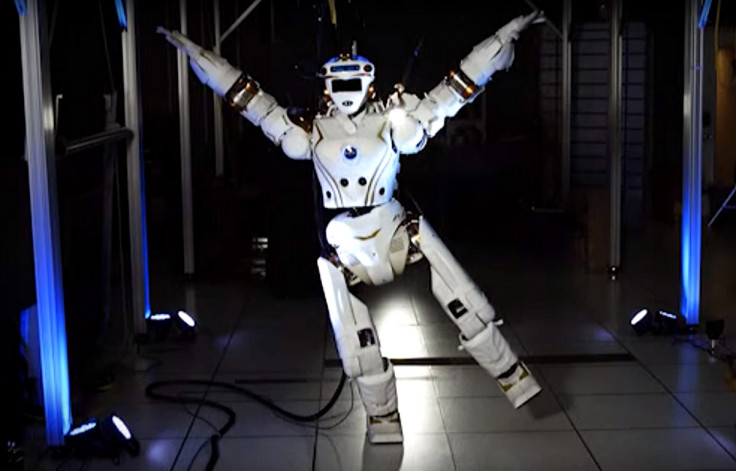Nasa releases video of R5 Valkyrie humanoid robot dancing to techno music

Are you excited about the prospect of humans heading to Mars and outer space? Well to prevent a situation arising where it's tough for astronauts to survive on a foreign planet when things go wrong like they did for Matt Damon's character in the film The Martian, Nasa is planning to make a humanoid robot the first two-legger on the red planet.
Nasa has released a new video showing its R5 Valkyrie humanoid robot walking, running, balancing and dancing to techno music during experiments carried out by robotics scientists, to demonstrate how dexterous the robot is, which would stand it in good stead to perform tasks on Mars with a similar proficiency to a human.
Nasa's R5 Valkyrie humanoid robot is 6ft tall and weighs 290lbs (132kg). It was originally designed to assist humans during disaster relief missions, but the space agency soon realised that the robot would also be suitable for deployment in space on another planet since it is as dexterous as a human, coming with arms with seven degrees of freedom, as well as hands and legs with six degrees of freedom and a pelvis with three degrees of freedom.
On 17 November, Nasa announced that it had awarded two R5 Valkyrie robots to MIT and Northeastern University to develop better software for the robot to help it complete missions on Mars, based on the robotics researchers' experience with Boston Dynamics' Atlas robot in the Defense Advanced Research Projects Agency (Darpa) Robotics Challenge – a two-and-a-half-year-long competition funded by the US military's research arm that ended in May.
The competition was designed to encourage researchers to build better robots that would be capable of autonomously carrying out missions during natural disasters and emergency situations like the 2011 Tōhoku earthquake and tsunami disaster, in order to take away risk to human life by assessing damage and searching for victims.
To win, the 24 finalist teams from research institutes around the world had to develop computer algorithms that would enable their robots to pass eight tasks, which included scrambling over rocks, driving a car, opening doors, drilling holes, climbing stairs and turning valves, and each task had to be completed in the space of an hour.
The competition was won by South Korean science and technology institute KAIST, but the second prize was won by Team IHMC Robotics using Boston Dynamics' Atlas robot.
© Copyright IBTimes 2025. All rights reserved.






















